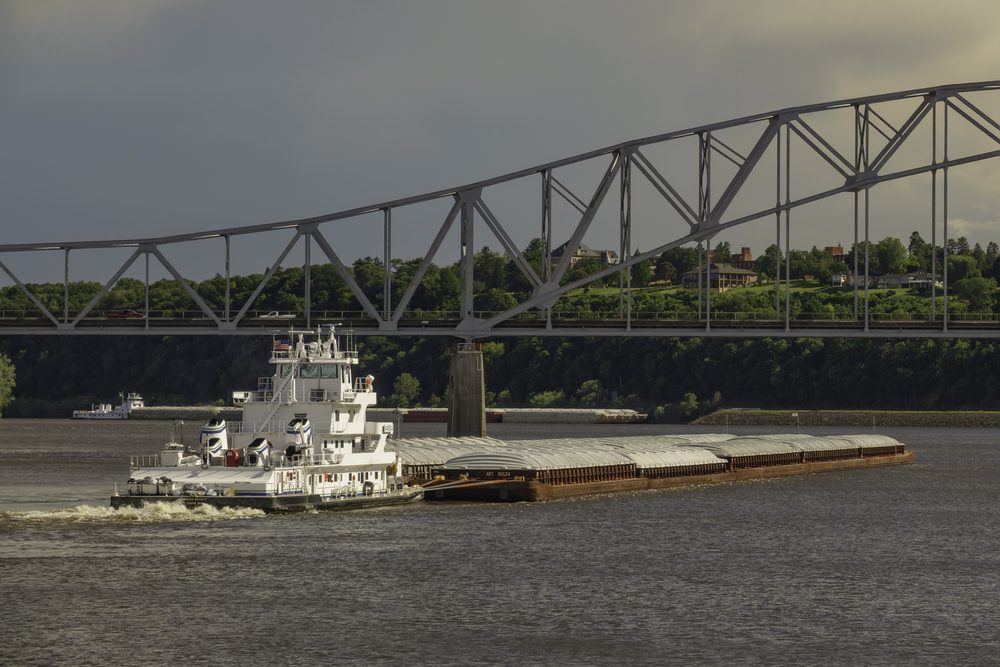By Jeanne M. Grasso & Jonathan K. Waldron
All was relatively tranquil offshore in 2011–2012 with respect to Jones Act issues. Activities offshore had heated up in 2009–2010 as a result of the controversy arising from the U.S. Customs and Border Protection’s (“CBP”) proposed modification and revocation of numerous Jones Act rulings pertaining to offshore operations. However, following the Deepwater Horizon incident in 2010, energy development offshore went south with the moratorium and government and media scrutiny on offshore oil and gas activities. Vessels departed the Gulf of Mexico and headed for a friendlier environment internationally.
As time passed and memories faded, work is coming back to the Gulf, and the outlook for 2013 is bright. As discussed in more detail below, however, recent developments in offshore Jones Act enforcement are creating great uncertainty.
In July 2009, CBP proposed modifying or revoking 20 Jones Act rulings issued over a span of more than 30 years involving vessels transporting specialized equipment used by the offshore oil and gas industry.
The rulings largely involve whether something is “vessel equipment” or “merchandise,” two key terms of art for Jones Act interpretations. If an item is “merchandise,” only a coastwise-qualified vessel may transport the item between coastwise points; if an item is “vessel equipment,” a non-coastwise-qualified vessel may be used to transport the item between coastwise points or transport the item from a coastwise point and install the item at a different coastwise point. CBP’s modification and revocation proposal came shortly after CBP’s revocation of the now infamous “Christmas Tree” ruling earlier in 2009, in which CBP (originally) determined that a multi-function, well head assembly called a “Christmas Tree” was vessel equipment and therefore could be transported from one coastwise point to another and then installed by a foreign-flag vessel. CBP then changed its mind a few months later.
Amid much controversy regarding the appropriate means by which to overturn 30 years of precedent, CBP withdrew its revocation proposal and initiated a formal rulemaking under the Administrative Procedure Act, then, amid more controversy, withdrew that rulemaking in November 2010. Since then, no rulings related to subsea installation on the OCS involving the Jones Act’s “equipment of the vessel” exception have been issued by CBP. Nor has CBP issued any guidance to clarify the definition of “vessel equipment.” As such, industry has continued to conduct subsea installation and repair operations offshore by relying on the previously issued OCS-related rulings as precedent. Moreover, it has become clear in the last couple of years that some segments of industry have been hesitant to submit new ruling requests for fear that CBP would not follow existing precedent.
What has caused the new uncertainty? A new offshore enforcement regime has developed due to pressure on CBP “to enforce the Jones Act” from Congress and the domestic industry. Some CBP Port Directors have started issuing penalty notices for alleged violations, with penalties ranging in the millions of dollars, relating to offshore subsea operations that occurred years ago. Another Port Director informed industry that every offshore subsea installation or repair project requires its own ruling covering the contemplated operations to demonstrate compliance with the Jones Act. Otherwise, CBP will issue a penalty for the value of the merchandise or the cost of the transportation—whichever is greater—even if the operation fits squarely within prior “equipment of the vessel” rulings.
This is a dramatic change from the past. Based on a recent review of CBP decisions in the last 10 years in response to petitions for relief on Jones Act penalties with an assessed amount greater than $100,000, the highest penalty assessed after mitigation proceedings was under $42,000. And, several of the Jones Act enforcement actions over the last 10 years related to the movement of instruments of international traffic, generally empty shipping containers.
This puts owners and operators in an untenable position of uncertainty. If they request a ruling in advance (which is not required), they risk obtaining an adverse ruling, irrespective of prior precedent, as a result of the political pressure now surrounding interpretation of the Jones Act as it applies offshore. If they decide to move forward without a ruling, then the company may be subject to a penalty action. This is simply bad policy and contrary to CBP’s “Informed Compliance” policy, which is intended to ensure industry knows what to expect and that interpretations are predictable and consistent. Shaping policy through ad hoc enforcement actions is neither in CBP’s nor the industry’s best interest, especially when the United States is only now starting to see a recovery in the oil and gas sector in the Gulf of Mexico.
In conclusion, owners and operators should take these Jones Act developments into consideration when making operational decisions involving the installation, repair, and maintenance of offshore OCS infrastructure as they plan and execute projects in 2013 and the coming years.
Jeanne Grasso & Jonathan Waldron are partners at Blank Rome LLP. This article first appeared in the January 2013 Maritime Reporter

 Join The Club
Join The Club











